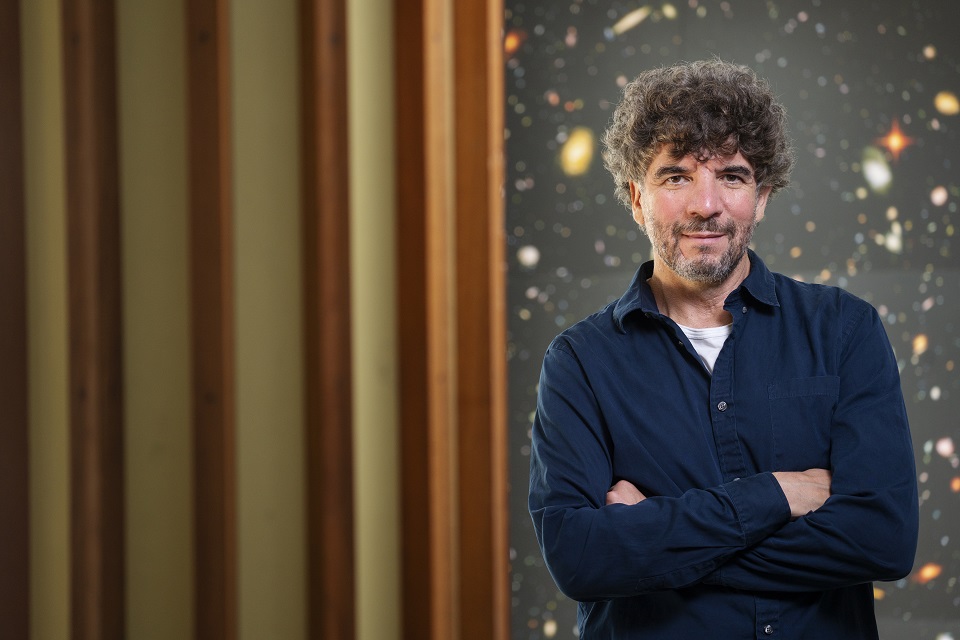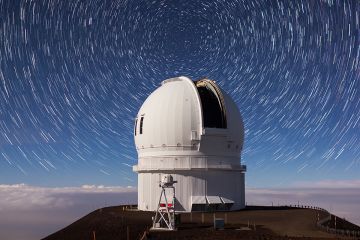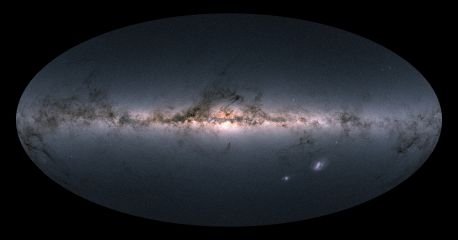Expert Q&A on dark matter halos and the formation of galaxies

Cosmologist Julio Navarro’s revolutionary work on dark matter halos has influenced our modern understanding of how galaxies form and evolve, and the changing cosmic structure of the universe. For his remarkable contributions in this area, Navarro has been recognized as a Citation Laureate—the first for a University of Victoria researcher.
The designation by Clarivate Analytics uses data to identify highly cited researchers whose contributions to science have been influential or even transformative, deeming a researcher to be of “Nobel class.” Since the designation was created in 2002, 360 researchers have been named Citation Laureates, of which 54 laureates eventually received a Nobel Prize. Navarro is the eighth researcher from a Canadian institution that has received the recognition, according to Clarivate.
Q Why is understanding dark matter and dark energy important?
A. Dark matter and dark energy are the biggest mysteries that we have in physics today. It’s the intellectual challenge that defines, not just me or my group, but an entire generation of scientists.Once we have a more complete understanding of these two concepts, we will have to revise and revolutionize the theories that define our current understanding of physics as a whole. Our understanding of physics does not currently account for the concepts of dark matter and dark energy—in fact it is exactly the opposite. In order to put it all together, we will have to revolutionize our understanding of physics today. We are deeply embedded in one of the most mysterious puzzles that humankind has ever faced.
Q What do we currently know about dark matter and dark energy?
A. We know how much dark matter there is in the universe, we know where it is, but we don't know what it is. Dark matter is one of the main constituents of the universe and one of the key things we know about it is that it doesn't interact with light—it's transparent. We call it dark, but really it’s transparent.The universe is expanding, as you may have heard, but it's expanding in a very odd way that we believe is governed by dark energy. We used to think that the expanding universe behaved like a rock thrown up into the air. It slows down and eventually it might stop. But the universe doesn’t do that. It started expanding and at some point its expansion started accelerating. It is as if there is some kind of force that is aiding in the expansion, helping it expand faster and faster all the time. This repulsive “force” is completely different from gravity, and is what we call dark energy. It has very bizarre properties and doesn’t fit into any of the models we currently have.
Q What are dark matter halos?
A. Dark matter naturally gravitates towards other dark matter, collapsing into individual systems that we call dark matter halos. These dark matter halos are the source of all the structures that we know, and every galaxy has its own halo. The dark halo is much bigger than the stars, the gas, and dust that form the galaxy.Imagine an enormous snowball of mass that is essentially invisible. And at the centre there is a little drop of light, which is all the stars of the galaxy put together. In the case of the Milky Way, it is a little disc of stars that spins around the centre of the galaxy. Imagine that as surrounded by an enormous amount of dark matter that extends out to 30-50 times farther than the disc itself. It's an invisible object, at the centre of which the Milky Way resides.
Q What did your Citation Laureate research propose?
A. Our research explored how dark matter clusters around galaxies. We proposed a structure for those dark matter halos that is incredibly simple—that all the dark matter halos of every galaxy look very much alike. The only thing that changes is the size. But this structure, which describes the way the dark matter is distributed from the centre outwards, is all the same. And it doesn’t just apply to individual galaxies. When you have a system of galaxies that are so close together that they share halos, it applies there too. This has been tested both observationally and tested through computer simulations, and it's all so far come out very, very well. And it's the basis on which the current paradigm of structure formation of the universe rests on, which is known as the theory of cold dark matter.Q How does your work use supercomputers?
A. Because dark matter doesn't interact with light, and it doesn't interact in any strong way with matter, then we know that the only force that is important for understanding dark matter is gravity. So that's an enormous simplification. It means that we don't have to solve all the equations in physics to understand how it evolves. Since we know fairly accurately what the early universe was like—very uniform with tiny perturbations—then we can put relatively simple equations into the computer with the assumption that the only thing that matters is gravity.Then we can go forward in time in a computer and evolve the initial conditions to today and compare the structure formed in the simulation to observations. And that is the test that we use to tell whether both our assumptions about dark matter and our understanding of the evolution is correct or not.
Because the universe is very vast, and we want to understand the detail of what's happening, this requires supercomputer resources.
Q How did you decide to go into astronomy?
A. I grew up in northern Argentina in a rather poor part of the country in the middle of the desert. It was very hot in the summer, so as a child I slept outside most of the time. We had frequent power cuts, and as the city would go dark, the sky would start shining. As our eyes got accustomed to the darkness, the sky became brighter and brighter all the time. Stars appeared and that fascinated me when I was a child. They were not the same each time I saw them—they moved all over. It seemed so crazy, but repeatable, understandable. The beauty of the dark night sky along with this kind of clockwork of the stars captured my attention. I wanted to put it all together.When I was finishing high school, I told my mother that I wanted to be an astronomer. My mother said: “Over my dead body. Who's going to marry you? What are you going to do? This is crazy.”
So she sent me to study engineering, but at the same time I was also studying astronomy, which was my passion. And so I kind of combined the two careers. Eventually I abandoned engineering and focused on astronomy, and I guess the rest is history.
A media kit containing high-resolution photos of Navarro and a link to a Clarivate Analytics video interview is available on Dropbox.
Photos
Media contacts
Julio Navarro (Physics and Astronomy) at jfn@uvic.ca
Vimala Jeevanandam (Communications Officer, Science) at 250-721-8745 or scieco@uvic.ca
Jennifer Kwan (University Communications + Marketing) at 250-721-7641 or researchcomm@uvic.ca
In this story
Keywords: astronomy, research, Physics and Astronomy, administrative
People: Julio Navarro





